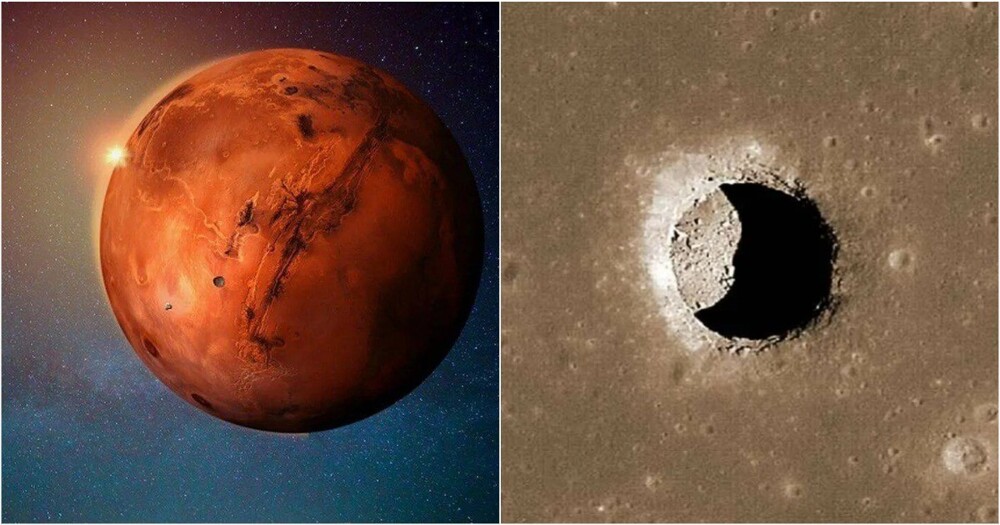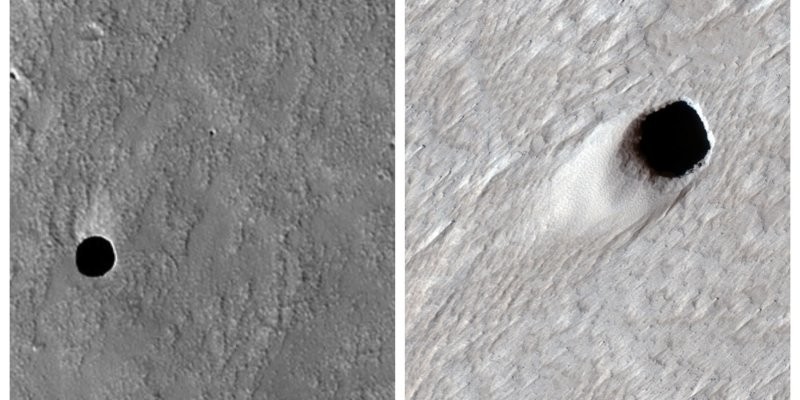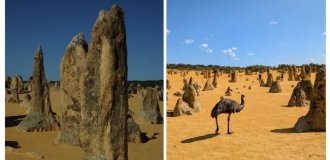While some are looking for water frost on Mars, others are finding holes and are very happy about it. 
In fact, of course, no one was looking for them purposefully. They found themselves, and quite a long time ago. Scientists have already determined their nature; unfortunately, the holes were not dug by Martians, but appeared as a result of ancient volcanic activity on Mars.
Well, a hole and a hole, why should she be happy, you naturally ask. Not so simple. After all, as befits a real scientist, you need to look into the holes, or even better, climb into them in order to thoroughly study everything there.
So, previously one could only fantasize about the fact that one could climb there. Now scientists have a real opportunity to launch robots there in the next few years. 
According to Space.com, these pits on Mars could be about 3 meters across, but how deep they go and where they lead is anyone's guess.
Moreover, you never know what could be hiding there, from extraterrestrial life to new minerals. It is necessary to find out how far these holes can go deep into the planet and where they generally lead. They can also become a refuge for future astronauts, because they are relatively warm and more or less safe than on the surface of the red planet.
“We've seen more than one of these on Mars,” said geophysicist Brandon Johnson. “But they're really interesting because they're places where astronauts could go and be safe from radiation.” 
The largest volcano in our solar system, Olympus Mons, is located on Mars and is approximately three times taller than Everest.
Holes, or pits, located on the slopes of ancient volcanoes in the Martian region of Tharsis, the largest volcanic region of Mars, have long intrigued the minds of scientists.
There are similar holes on Earth and lava tubes are usually hidden behind them. "They may be large enough to walk on, but they may also be small, or the voids may be discrete," Ross Beyer, a planetary scientist at the SETI Institute, told Business Insider via email. "So these pits we see on Mars could be opening up larger caves." 
Volcanoes National Park in Hawaii has a giant underground lava tube. It is so large that tens or even hundreds of people could fit in it.
According to Johnson, the best way to explore the underground is to get inside by sending a rover to explore the pit. “There are missions being proposed where the robot essentially has to walk along a rope, go down one of these skylights and explore what's inside,” he noted. “This is a good place to look.”
Add your comment
You might be interested in:























